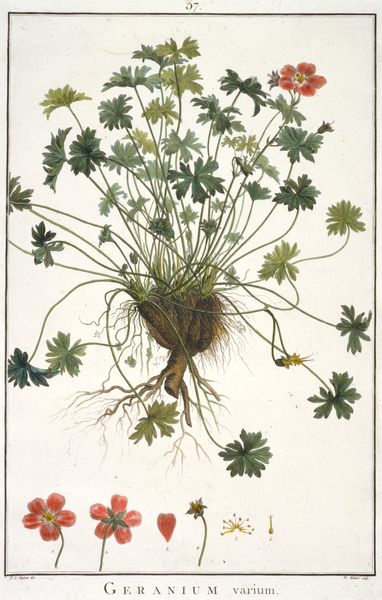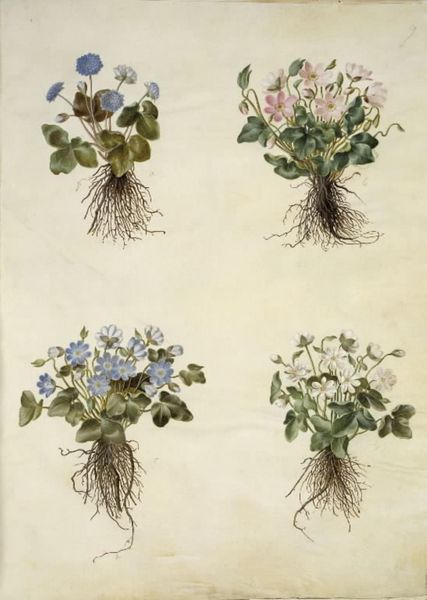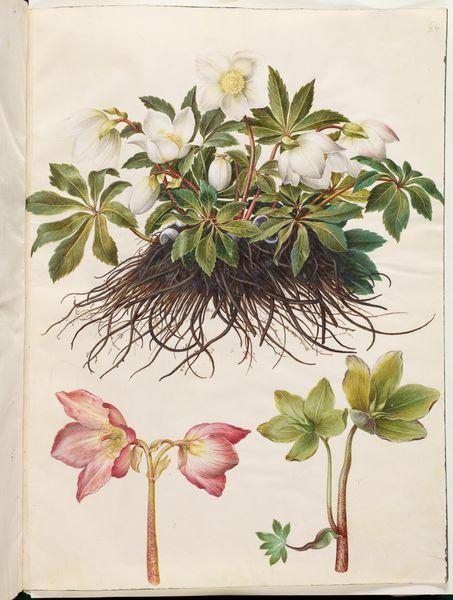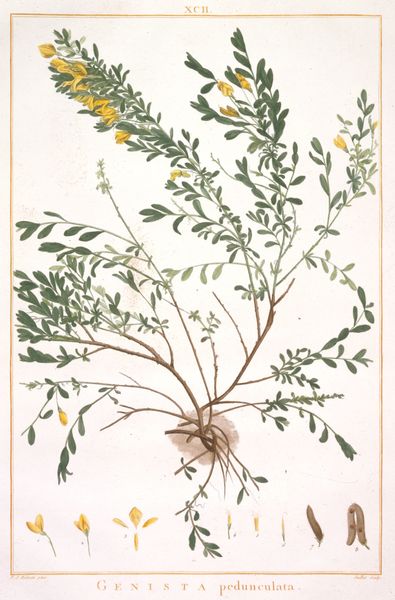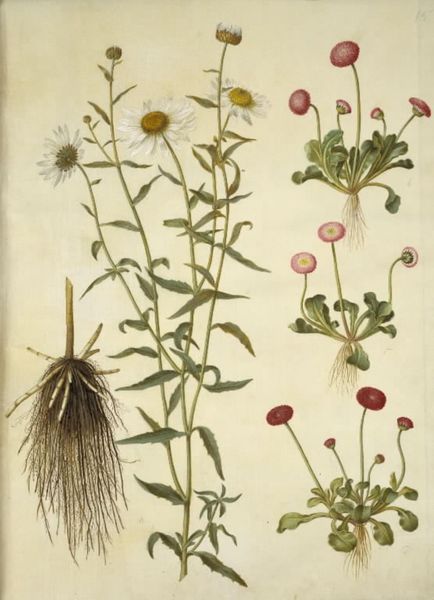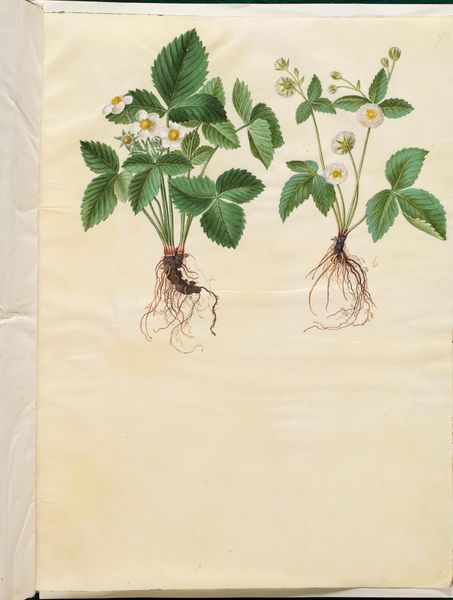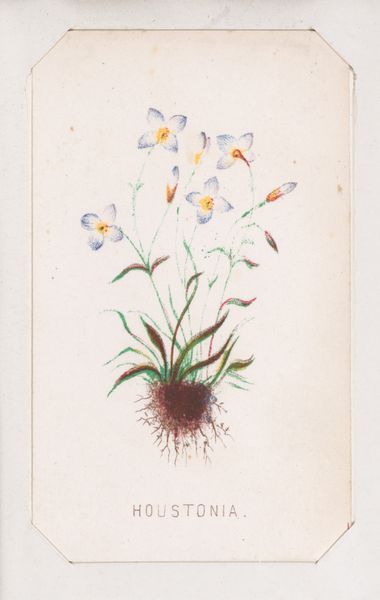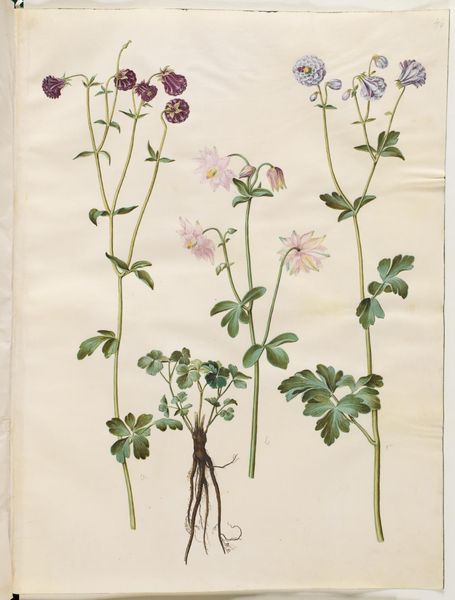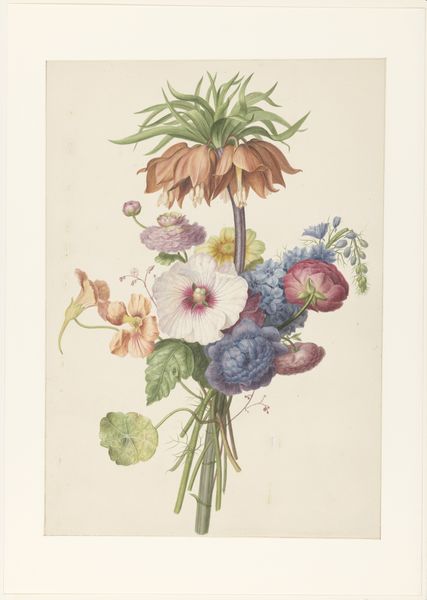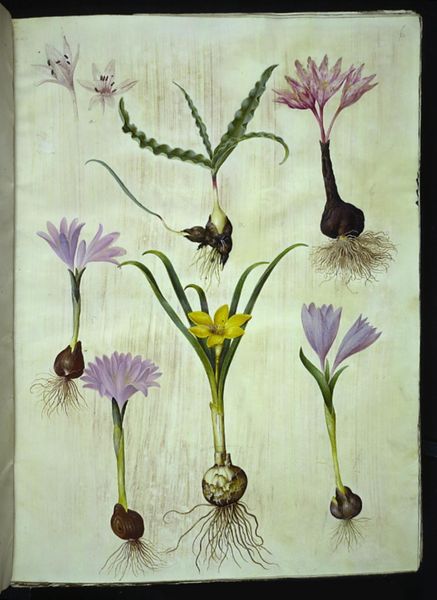
drawing, print, watercolor
#
drawing
# print
#
botanical illustration
#
watercolor
#
botanical drawing
#
watercolour illustration
#
academic-art
#
botanical art
#
watercolor
Dimensions: 15 3/4 x 10 3/4 in. (40.01 x 27.31 cm) (plate)
Copyright: Public Domain
Editor: This is "Erodium chamaedryoides," a watercolor and print by François Hubert, dating back to 1787-1788. It’s a botanical illustration with incredible detail. I’m curious about the style; it feels both scientific and artistic at the same time. How do you interpret this work, especially considering its historical context? Curator: The seeming contradiction is actually the key! Botanical illustrations like this served a crucial role in the late 18th century. They weren't just pretty pictures. Think of the Enlightenment emphasis on cataloging and understanding the natural world. This image exists within a framework of scientific exploration and expanding empires. What kind of power do you think such detailed representations might give to the cultures that can create or purchase it? Editor: That’s fascinating! So, this level of detail was more than just artistic expression; it was about documenting and classifying. So is it about asserting control over nature through knowledge? Curator: Precisely. Consider where this piece was created and its potential audience. Who had the resources to commission or create such detailed work? It was part of a broader European project of understanding, and, inevitably, controlling, the natural world, and botanical art often reflects this dynamic. How does understanding that context change your perception of the artwork itself? Editor: It makes me see it as less of an innocent observation of nature and more as a tool of exploration and perhaps even exploitation. It adds a layer of complexity to the image. I thought that academic art only applied to figurative or allegorical depictions. I see now it describes the nature of the drawing being objective above all. Curator: Absolutely. And that "objectivity," we understand now, is always framed by a particular worldview and set of interests. Hopefully this conversation opens avenues to reconsider canonical definitions. Editor: This has been a real eye-opener! I'll definitely look at botanical illustrations differently from now on. Thanks.
Comments
No comments
Be the first to comment and join the conversation on the ultimate creative platform.

